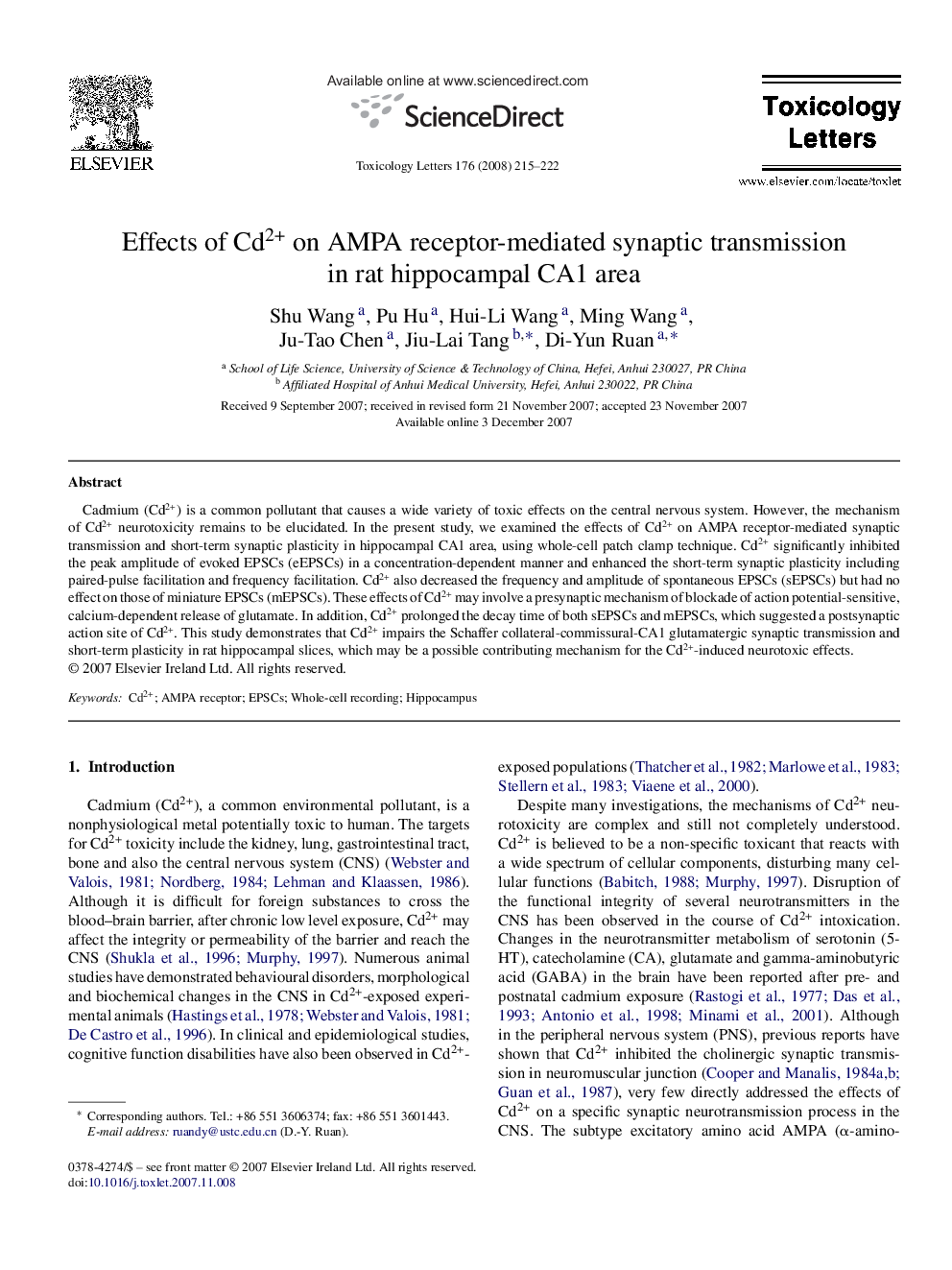| Article ID | Journal | Published Year | Pages | File Type |
|---|---|---|---|---|
| 2601656 | Toxicology Letters | 2008 | 8 Pages |
Cadmium (Cd2+) is a common pollutant that causes a wide variety of toxic effects on the central nervous system. However, the mechanism of Cd2+ neurotoxicity remains to be elucidated. In the present study, we examined the effects of Cd2+ on AMPA receptor-mediated synaptic transmission and short-term synaptic plasticity in hippocampal CA1 area, using whole-cell patch clamp technique. Cd2+ significantly inhibited the peak amplitude of evoked EPSCs (eEPSCs) in a concentration-dependent manner and enhanced the short-term synaptic plasticity including paired-pulse facilitation and frequency facilitation. Cd2+ also decreased the frequency and amplitude of spontaneous EPSCs (sEPSCs) but had no effect on those of miniature EPSCs (mEPSCs). These effects of Cd2+ may involve a presynaptic mechanism of blockade of action potential-sensitive, calcium-dependent release of glutamate. In addition, Cd2+ prolonged the decay time of both sEPSCs and mEPSCs, which suggested a postsynaptic action site of Cd2+. This study demonstrates that Cd2+ impairs the Schaffer collateral-commissural-CA1 glutamatergic synaptic transmission and short-term plasticity in rat hippocampal slices, which may be a possible contributing mechanism for the Cd2+-induced neurotoxic effects.
